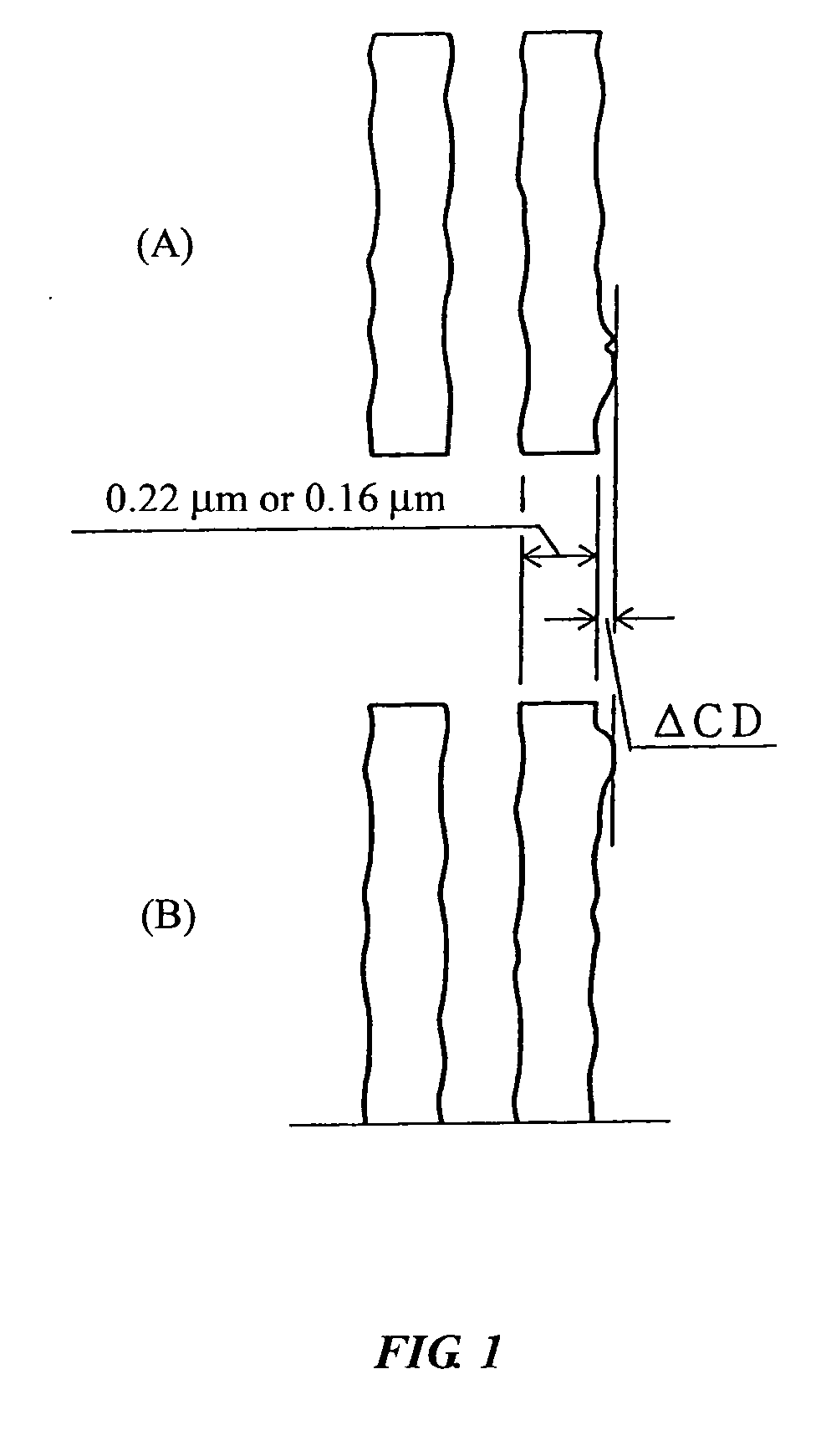Acid generators, sulfonic acids, sulfonyl halides, and radiation sensitive resin compositions
a technology of sulfonyl halide and resin composition, which is applied in the field of acid generators, can solve the problems of high mask dependency, insufficient resolution performance as a photoresist, and difficult microfabrication with a line width of a quarter micron order using near ultraviolet rays, etc., and achieves the effect of reducing the development rate of exposed areas, and reducing the rate of residual films
- Summary
- Abstract
- Description
- Claims
- Application Information
AI Technical Summary
Benefits of technology
Problems solved by technology
Method used
Image
Examples
synthesis example 1
[0268] After charging 69.6 g of sodium dithionite and 50.4 g of sodium hydrogencarbonate to a 21 three-mouthed flask fully substituted with nitrogen, 600 ml of dimethylsulfoxide and 47.8 g of 1-bromo 1,1-difluoro-2-(bicycle[2.2.1]heptan-2-yl)ethane were added one after the other at room temperature and the mixture was stirred at 80° C. in a nitrogen atmosphere for five hours. Next, after distilling the reaction solution under reduced pressure to extract the dimethylsulfoxide, 300 g of ion-exchanged water, 350 mg of sodium tungstate dihydrate, and 5.0 g of disodium hydrogenphosphate were added, and while maintaining the pH of the reaction solution, 5.6 ml of a 30% hydrogen peroxide solution was carefully added dropwise at room temperature. The mixture was stirred at 60° C. for one hour. The obtained mixture was distilled under vacuum to remove the water, the resulting residue was extracted with methanol twice, and the methanol was removed by vacuum distillation to obtain 27.3 g of so...
synthesis example 2
[0277] After charging 4 g of 1-n-butoxynaphthalene and 10.6 g of a phosphorous pentaoxide-methansulfonate mixture to a 300 ml eggplant flask and stirring the mixture for 15 minutes at room temperature, 2.4 g of tetramethylenesulfoxide was added dropwise at 0° C. and the mixture was stirred for 20 minutes. After gradually increasing the temperature to room temperature and stirring for a further one hour, the reaction solution was once again cooled to 0° C. After the addition of 100 ml of distilled water, the mixture was adjusted to pH 7.0 using 25% ammonia water and stirred for one hour at room temperature. Next, the reaction solution was washed with ether, 5.0 g of compound (a) and 100 ml of methylene chloride were added at room temperature. The mixture was stirred at the same temperature for one hour. The organic layer was separated, washed with ion-exchanged water five times, and concentrated under vacuum. The concentrate was reprecipitated with methylene chloride / n-hexane to obta...
synthesis example 3
[0294] A solution of 6.45 g of diphenyliodonium chloride dissolved in 100 ml of ion-exchanged water was charged to a 300 ml eggplant flask, 5.0 g of the compound (a) and 100 ml of methylene chloride was added to the solution at room temperature, and the mixture was stirred at the same temperature for one hour. The organic layer was separated, washed with ion-exchanged water five times, and concentrated under vacuum to obtain 8.1 g of diphenyliodonium 1,1-difluoro-2-(bicyclo[2.2.1]heptan-2-yl)ethane sulfonate as a white solid.
[0295] This compound is indicated as “acid generator (A-3)”.
[0296] Results of mass spectrometry of the acid generator (A-3) show that the anion moiety is m / z=239 (M+).
[0297] The following are the results of 1H-NMR analysis (chemical shift Δ(ppm)) of the acid generator (A-3).
[0298] 8.03(4H)
[0299] 7.56(2H)
[0300] 7.41(4H)
[0301] 2.15-1.72(5H)
[0302] 1.49-0.61(8H)
PUM
| Property | Measurement | Unit |
|---|---|---|
| width | aaaaa | aaaaa |
| wavelength | aaaaa | aaaaa |
| wavelength | aaaaa | aaaaa |
Abstract
Description
Claims
Application Information
 Login to View More
Login to View More - R&D
- Intellectual Property
- Life Sciences
- Materials
- Tech Scout
- Unparalleled Data Quality
- Higher Quality Content
- 60% Fewer Hallucinations
Browse by: Latest US Patents, China's latest patents, Technical Efficacy Thesaurus, Application Domain, Technology Topic, Popular Technical Reports.
© 2025 PatSnap. All rights reserved.Legal|Privacy policy|Modern Slavery Act Transparency Statement|Sitemap|About US| Contact US: help@patsnap.com



